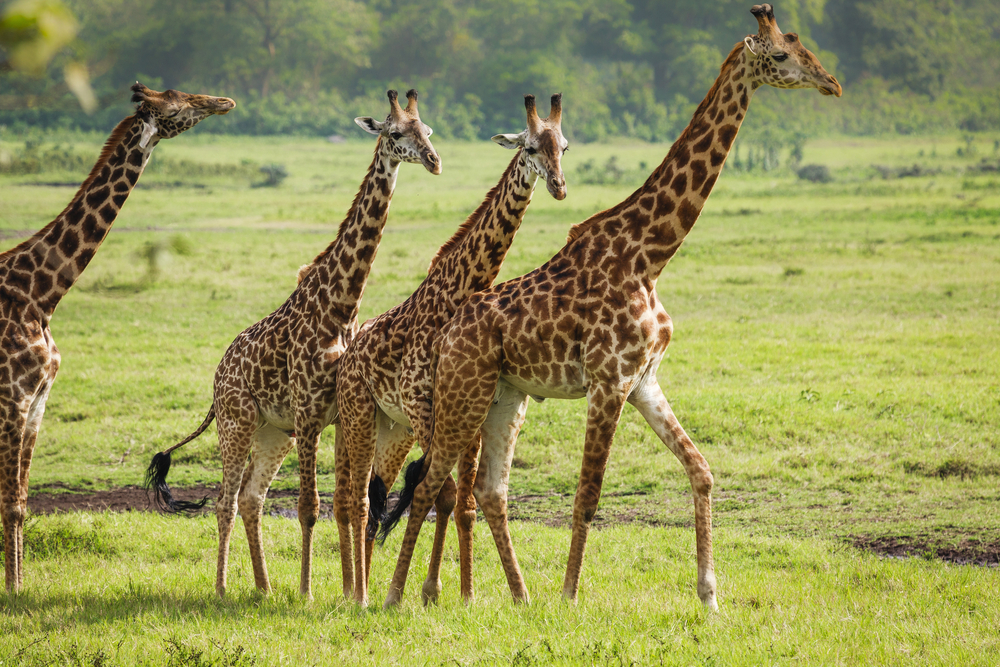Nyerere Overview
Nyerere National Park, locally known as Hifadhi ya Taifa ya Nyerere, is Tanzania’s largest protected area, covering an impressive 30,893 square kilometers (11,928 square miles). Established in 2019, the park is part of the renowned Selous Game Reserve, a UNESCO World Heritage Site, and is located in the southern part of Tanzania. Named in honor of Julius Nyerere, Tanzania’s founding father, the park stands as a monumental testament to the country’s dedication to preserving its rich biodiversity and vast wilderness.
The landscape of Nyerere National Park is remarkably diverse, featuring sprawling savannah plains, dense miombo woodlands, open floodplains, and meandering rivers. The Rufiji River, Tanzania’s largest river, is the park’s lifeblood and a major highlight for visitors. It flows through the heart of the park, creating a network of lakes, oxbow channels, and lush wetlands. Boat safaris along the Rufiji offer a unique perspective of the park, where hippos, crocodiles, and waterbirds thrive in abundance. Though mountains are not a defining feature, the park’s undulating terrain and scenic vistas provide a picturesque backdrop for wildlife viewing.
Nyerere National Park is celebrated for its exceptional wildlife diversity, making it one of Africa’s most sought-after safari destinations. It is home to significant populations of African elephants, buffaloes, giraffes, zebras, and impalas that roam freely across its vast plains. The park also boasts a robust predator population, with lions, leopards, cheetahs, and the elusive African wild dogs frequently spotted hunting on the open savannah.
The park is particularly known for its high concentration of hippos and Nile crocodiles, which populate the Rufiji River and its adjacent lakes. The riverbanks are a magnet for wildlife, drawing large herds of animals, especially during the dry season. Birdlife is equally impressive, with over 440 recorded species, including the African fish eagle, goliath heron, kingfishers, ibises, and the African skimmer. Migratory birds add to this diverse avian population, making Nyerere a paradise for birdwatchers.
Nyerere National Park plays a vital role in Tanzania’s conservation strategy. Its vast expanse provides refuge for endangered species such as the black rhinoceros and African wild dogs. Managed by the Tanzania National Parks Authority (TANAPA), the park focuses on combatting poaching, protecting critical habitats, and promoting sustainable eco-tourism. Partnerships with international conservation organizations have bolstered anti-poaching efforts and helped restore degraded areas, ensuring the park’s long-term ecological health.
Visitors to Nyerere National Park can experience its beauty and wildlife through a variety of activities. Traditional game drives allow visitors to witness iconic African wildlife across its open plains, while guided walking safaris offer an intimate exploration of the park’s ecosystems. Boat safaris on the Rufiji River provide a tranquil yet thrilling way to observe hippos, crocodiles, and birdlife up close. Additionally, fly-camping under the stars offers a unique opportunity to immerse oneself in the raw wilderness of the park.
In summary, Nyerere National Park is a vast, untamed wilderness that showcases Tanzania’s extraordinary biodiversity and scenic beauty. With its abundant wildlife, riverine landscapes, and conservation importance, it offers a world-class safari experience for adventurers and nature enthusiasts alike.

















































































